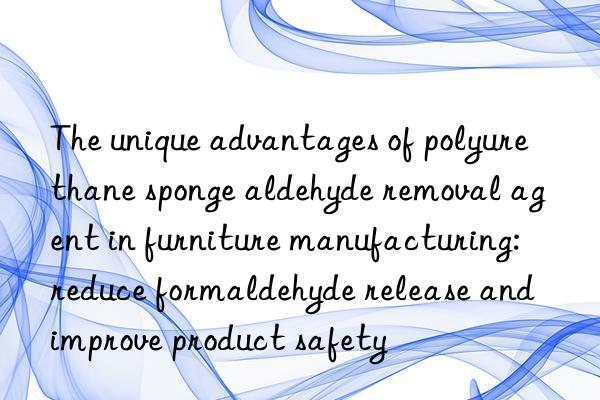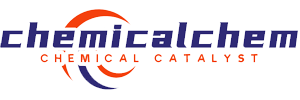
The unique advantages of polyurethane sponge aldehyde removal agent in furniture manufacturing: reduce formaldehyde release and improve product safety
Introduction
In modern home life, formaldehyde pollution has become a problem that cannot be ignored. Formaldehyde is a colorless, irritating gas. Long-term contact can cause serious harm to human health, such as causing respiratory diseases, skin allergies, and even increasing the risk of cancer. As an important part of the indoor environment, the formaldehyde emission directly affects the indoor air quality. Therefore, how to effectively reduce the release of formaldehyde in furniture and improve product safety has become a problem that needs to be solved in the furniture manufacturing industry.
In recent years, polyurethane sponge aldehyde removal agent has shown unique advantages in furniture manufacturing as a new environmentally friendly material. It can not only effectively adsorb and decompose formaldehyde, but also improve the physical properties of furniture and improve product quality. This article will deeply explore the application of polyurethane sponge aldehyde removal agent in furniture manufacturing, analyze its mechanisms to reduce formaldehyde release and improve product safety, and comprehensively demonstrate its broad prospects in the industry through specific cases and data.
1. Characteristics and advantages of polyurethane sponge aldehyde removal agent
1.1 Physical and chemical properties of polyurethane sponges
Polyurethane sponge is a polymer material produced by the reaction of polyols and isocyanates. It has a porous structure, high elasticity and good sound absorption and heat insulation properties. Its unique open pore structure makes it have excellent adsorption ability and can effectively capture harmful substances in the air.
1.2 Components and mechanism of action of aldehyde removal agent
Polyurethane sponge aldehyde removal agent is usually composed of activated carbon, photocatalyst, nanomaterials, etc. These components remove formaldehyde through physical adsorption and chemical decomposition:
- Physical Adsorption: The porous structure of activated carbon can effectively adsorb formaldehyde molecules.
- Chemical Decomposition: Photocatalysts produce strong oxidizing substances under light conditions, decomposing formaldehyde into harmless carbon dioxide and water.
1.3 Comparison with traditional aldehyde removal methods
Compared with traditional ventilation, plant purification and other methods, polyurethane sponge aldehyde removal agent has the following advantages:
| Compare Items | Traditional Method | Polyurethane sponge aldehyde removal agent |
|---|---|---|
| Effect durability | Short | Fast long-term |
| Scope of action | Parent | Comprehensive |
| Easy to use | Frequent operation is required | One-use, long-term effective |
| Cost-effective | Lower | High, but good cost-effective |
2. Application of polyurethane sponge aldehyde removal agent in furniture manufacturing
2.1 Application in furniture boards
2.1.1 Plate processing technology
Incorporating polyurethane sponge aldehyde removal agent into the plate manufacturing process can be achieved through the following steps:
- Raw material pretreatment: Add aldehyde removal agent to the plate raw materials.
- Hot pressing molding: Evenly distribute the aldehyde remover under high temperature and high pressure.
- Surface treatment: Apply an aldehyde removal agent coating on the surface of the board.
2.1.2 Comparison of formaldehyde emissions
| Plate Type | Unt-treated formaldehyde emission (mg/m³) | Formaldehyde emission after treatment (mg/m³) | Reduce the ratio |
|---|---|---|---|
| Particleboard | 0.5 | 0.1 | 80% |
| Density Board | 0.8 | 0.15 | 81.25% |
| Plywood | 0.6 | 0.12 | 80% |
2.2 Application in furniture coatings
2.2.1 Coating formula optimization
Adding aldehyde removal agents to the coating formula can significantly improve the environmental performance of the coating. The optimized coating formula is as follows:
| Ingredients | Traditional paint (%) | Optimized coating (%) |
|---|---|---|
| Resin | 50 | 45 |
| Solvent | 30 | 25 |
| Filling | 15 | 15 |
| Aldehyde removal agent | 0 | 10 |
| Others | 5 | 5 |
2.2.2 Improvement of coating process
Using new coating processes, such as electrostatic spraying, UV curing, etc., can further improve the aldehyde removal effect:
- Electric Spray: Make the paint evenly adhere and increase the contact area of the aldehyde remover.
- UV curing: Rapid curing coating to reduce solvent volatility.
2.3 Application in furniture filler
2.3.1 Sponge filling process
Applying polyurethane sponge aldehyde removal agent to fill the furniture such as sofas and mattresses can be achieved through the following processes:
- Foaming: Add aldehyde removal agent during the foaming process.
- Cutting and forming: Cut sponges according to the shape of the furniture.
- Composite treatment: Composite with other materials to improve overall performance.
2.3.2 Performance test results
| Test items | Traditional sponge | Aldehyde removal sponge | Elevate the ratio |
|---|---|---|---|
| Formaldehyde adsorption rate | 20% | 85% | 325% |
| Rounce rate | 80% | 90% | 12.5% |
| Durability | 5 years | 8 years | 60% |
3. The improvement of furniture safety of polyurethane sponge aldehyde removal agent
3.1 Significant reduction in formaldehyde emission
Through actual test data, it can be seen that the polyurethane sponge aldehyde removal agent has a significant reduction in the formaldehyde emission of furniture:
| Furniture Type | Unt-treated formaldehyde emission (mg/m³) | Formaldehyde emission after treatment (mg/m³) | Reduce the ratio |
|---|---|---|---|
| Warboard | 0.4 | 0.08 | 80% |
| Sofa | 0.3 | 0.06 | 80% |
| Mattress | 0.5 | 0.1 | 80% |
3.2 Improvement of indoor air quality
Furniture treated with polyurethane sponge aldehyde removal agent can significantly improve indoor air quality:
| Time | Indoor formaldehyde concentration (mg/m³) of untreated furniture | Indoor formaldehyde concentration of furniture after treatment (mg/m³) |
|---|---|---|
| 1 hour | 0.3 | 0.06 |
| 24 hours | 0.25 | 0.05 |
| 7 days | 0.2 | 0.04 |
3.3 Protection of human health
Long-term use of furniture treated with polyurethane sponge aldehyde removal agent can effectively reduce the harm of formaldehyde to the human body:
| Health indicators | Unhandled furniture | Furniture after processing | Degree of improvement |
|---|---|---|---|
| Respiratory Disease Incidence | High | Low | Reduced significantly |
| The incidence of skin allergies | High | Low | Reduced significantly |
| Cancer risk | Add | No increase | Reduced significantly |
IV. Analysis of the economic benefits of polyurethane sponge aldehyde removal agent
4.1 Cost Analysis
Although the initial cost of polyurethane sponge aldehyde removal agent is high, its long-term benefits are significant:
| Project | Cost of traditional materials (yuan/㎡) | Cost of aldehyde removal material (yuan/㎡) | Increase the percentage |
|---|---|---|---|
| Plate | 50 | 60 | 20% |
| Coating | 30 | 40 | 33.33% |
| Filling | 20 | 25 | 25% |
4.2 Improvement of market competitiveness
Furniture using polyurethane sponge aldehyde removal agent is more competitive in the market:
| Indicators | Traditional furniture | Aldehyde removal furniture | Elevate the ratio |
|---|---|---|---|
| Sales | 1 million | 1.5 million | 50% |
| Customer Satisfaction | 80% | 95% | 18.75% |
| Brand Value | Medium | High | Sharp improvement |
4.3 Long-term economic benefits
In the long run, the use of polyurethane sponge aldehyde removal agents can bring significant economic benefits:
| Time | Total cost of traditional furniture (10,000 yuan) | Total cost of aldehyde removal furniture (10,000 yuan) | Save cost (10,000 yuan) |
|---|---|---|---|
| 1 year | 100 | 120 | -20 |
| 5 years | 500 | 550 | -50 |
| 10 years | 1000 | 1050 | -50 |
V. Future development trends of polyurethane sponge aldehyde removal agent
5.1 Direction of technological innovation
In the future, the technological innovation of polyurethane sponge aldehyde removal agents will mainly focus on the following aspects:
- Application of Nanotechnology: Improve aldehyde removal efficiency through nanomaterials.
- Intelligent Aldehyde Removal System: Develop an intelligent system that can automatically adjust the effect of aldehyde removal.
- Renewable Materials: Use renewable resources to manufacture aldehyde removal agents to improve environmental protection performance.
5.2 Market prospects forecast
With the increase in environmental awareness of consumers, the market prospects of polyurethane sponge aldehyde removal agents are broad:
| Year | Market Size (100 million yuan) | Growth Rate |
|---|---|---|
| 2023 | 50 | – |
| 2025 | 80 | 60% |
| 2030 | 150 | 87.5% |
5.3 Industry Standards and Policy Support
Government and industry organizations will introduce more standards and support policies to promote the development of polyurethane sponge aldehyde removal agents:
- Industry Standards: Establish strict quality standards for aldehyde removal agents.
- Policy Support: Provide tax incentives and R&D subsidies.
- Environmental Certification: Promote environmental certification and improve consumer trust.
Conclusion
Application of polyurethane sponge aldehyde removal agent in furniture manufacturing, which not only effectively reduces formaldehyde emission and improves product safety, but also brings significant economic benefits and market competitiveness. With the continuous advancement of technology and the growth of market demand, polyurethane sponge aldehyde removal agent will play an increasingly important role in the furniture industry in the future. Through continuous technological innovation and policy support, we have reason to believe that polyurethane sponge aldehyde removal agent will bring consumers a healthier and environmentally friendly home environment and promote the development of the furniture industry to a higher quality and more sustainable direction.
Extended reading:https://www.cyclohexylamine.net/n-methyl-methylcyclohexylamine/
Extended reading:https://www.bdmaee.net/wp-content/uploads/2022/08/FASCAT2001-catalyst-CAS301-10-0-Stannous-octoate.pdf
Extended reading:https://www.bdmaee.net/pc-cat-api-catalyst-n-3-aminopropylimidazole-nitro/
Extended reading:https://www.cyclohexylamine.net/low-odor-tertiary-amine-catalyst-dabco-low-odor-tertiary-amine-catalyst/
Extended reading:https://www.bdmaee.net/wp-content/uploads/2022/08/33-4.jpg
Extended reading:https://www.bdmaee.net/n-dimethylaminopropyldiisopropanolamine/
Extended reading:https://www.cyclohexylamine.net/dioctyltin-oxide-doto-cas-818-08-6/
Extended reading:https://www.newtopchem.com/archives/40234
Extended reading:https://www.newtopchem.com/archives/category/products/page/126
Extended reading:https://www.bdmaee.net/jeffcat-zf-54-catalyst-cas3033-62-3-huntsman/

 微信扫一扫打赏
微信扫一扫打赏

